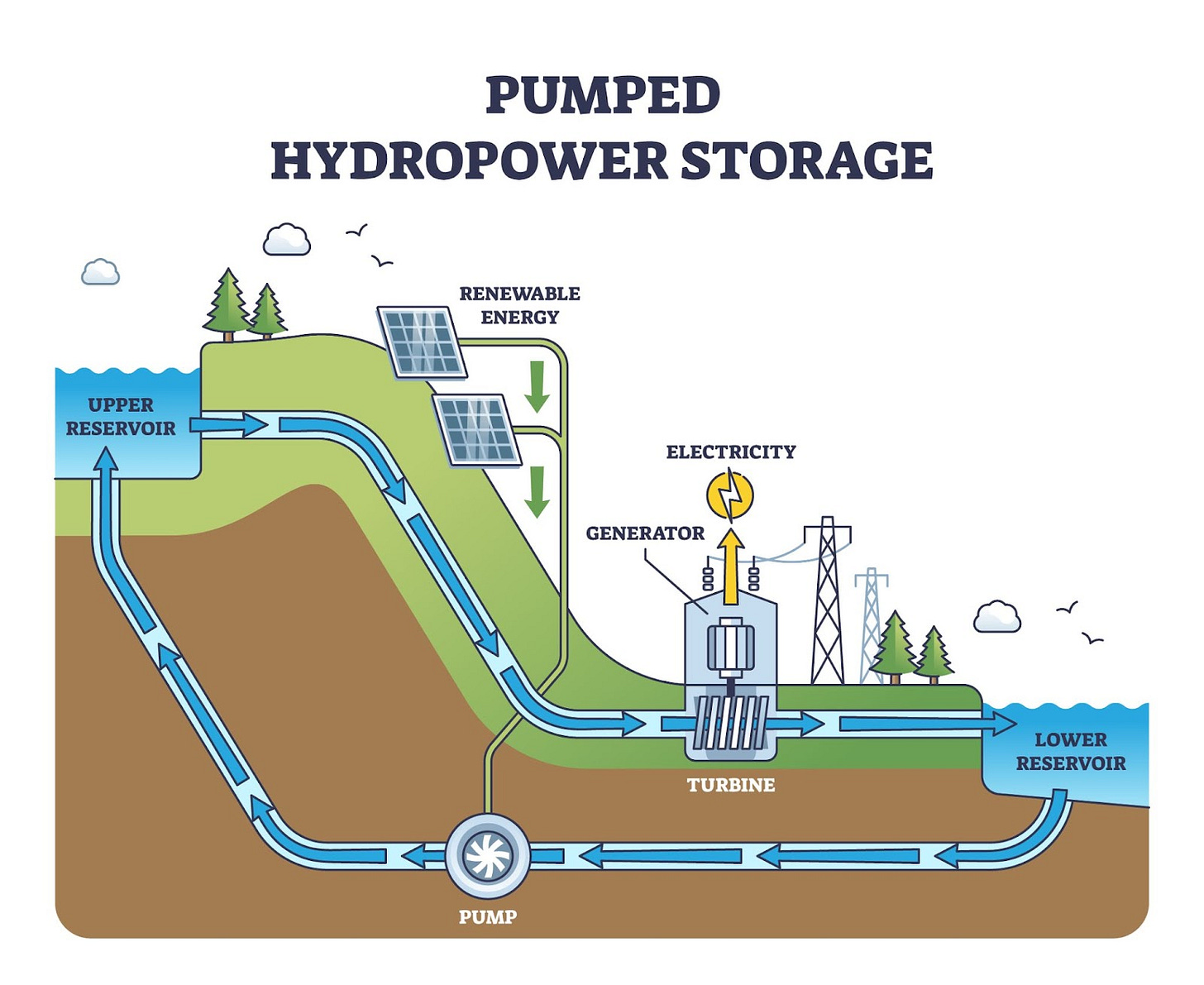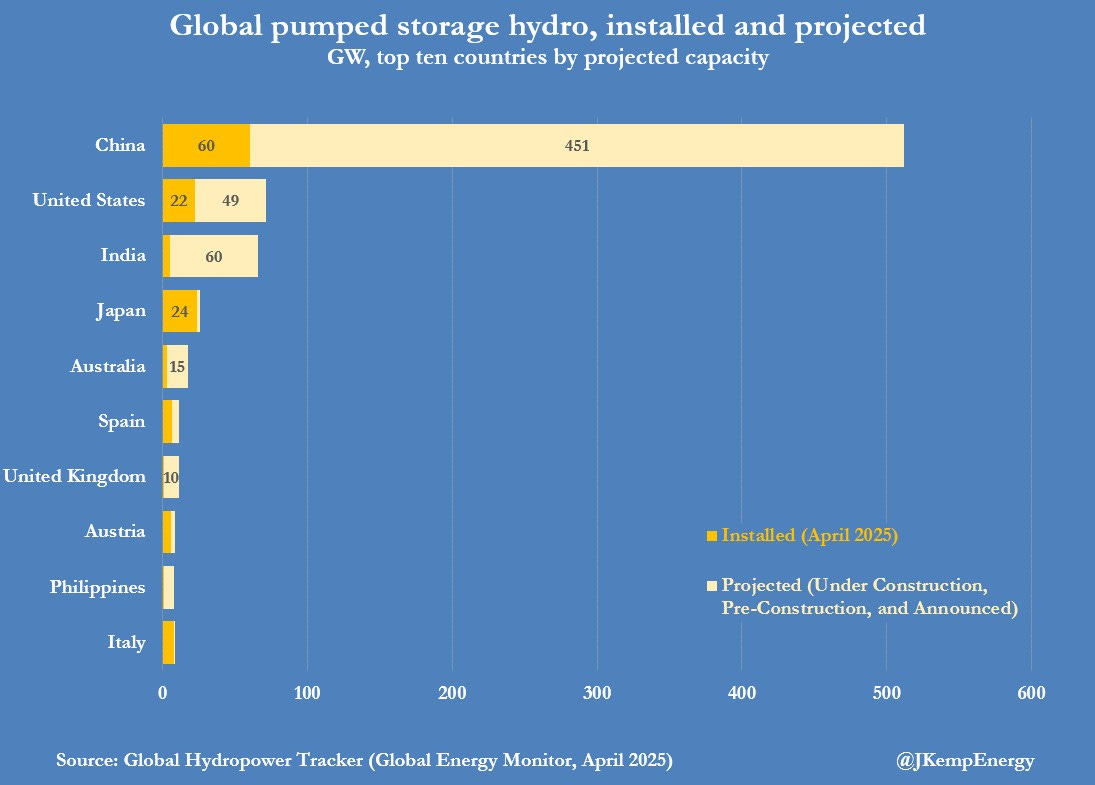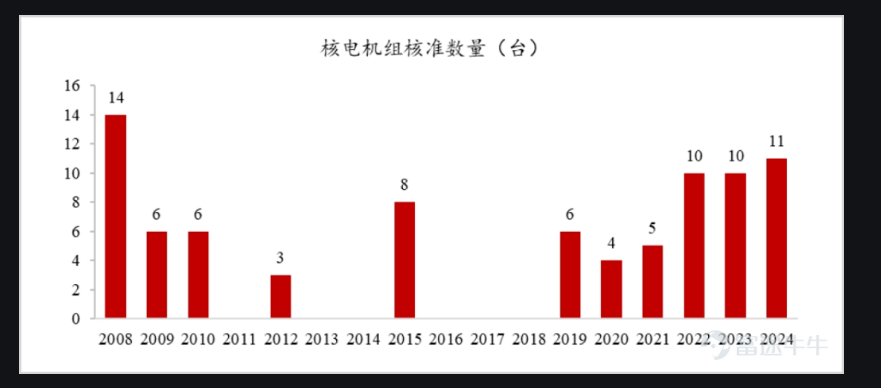As the first half of 2025 comes to a close, I think it is a terrific opportunity to recap how Capytal Management performed. 1H25 return is +29% and I think the portfolio is in a good position to do well in 2H25. Here are my current holdings by size
Before I move on, this is a friendly reminder to do your own research as this is not investment advice.
AI Basket (33% of Portfolio)
Power Solutions International (PSIX.NASDAQ): PSIX designs, makes, and sells advanced engines and power systems to data centers. The engines are powered by a variety of fuels, such as natural gas, diesel, gasoline, and biofuel. The company increased its focus on data center customers and moved away from traditional industrial and transportation customers. As the AI infrastructure buildout momentum continues, their revenue and earnings growth have accelerated in recent quarters. PSIX is currently valued at around 20x PE, with Q1/25 revenue and earnings growing 42% and 168% respectively
Near-term catalyst is their short-term debt refinancing as the loan matures in August. They intend to convert their 1-year loan into a longer-term debt facility. The debt is manageable even if they are not able to secure a long-term loan
Average cost: $45
TSS Inc (TSSI.NASDAQ): TSSI helps Dell plan, design, deploy, test, and integrate AI server racks. Due to robust demand, revenue grew 523% in Q1/25, driven by server procurement (TSSI helps customers secure AI racks for deployment). However, gross profits grew by “only” 239% as the lower-margin procurement segment became a greater proportion of revenue compared to the higher-margin system integration segment, which grew revenue by 253%
TSSI recently moved into a new facility that increased their power capacity from 2.7MW to 6MW (15MW by summer 2025, with a commitment to eventually reach 40MW over time) to accommodate the increased power requirements of AI servers. Dell, by far TSSI’s largest customer, increased their AI server backlog from $4b in Q4/25 to $14b in Q1/26 (their fiscal year 2025 ends on Jan 31, 2025) from a surge in bookings. They claim their pipeline is multiples of the $14b backlog, so we should expect potentially even more bookings in later quarters translated into future TSSI revenues, although the numbers might vary quarter-by-quarter. Valuation is very expensive at 80x P/E, but the growth rate might justify such a premium
Average cost: $26
Nebius (NBIS.NASDAQ): The company was formerly Yandex, the Google of Russia. Due to the Russia/Ukraine conflict, they conducted a complex restructuring, split off their Russian operations, and evolved into an Europe-focused AI infrastructure provider with a full-stack offering in both hardware design and software. Due to their expertise in data center design, their data center power efficiency is comparable to Azure and Google Cloud. They received an equity investment from Nvidia in Dec/24 and are one of Nvidia’s preferred partners in Europe. NBIS holds venture investments such as Avride (autonomous driving), Toloka (data labeling), TripleTen (edtech platform), and ClickHouse (data warehouse, open-source database). Near-term catalysts include the completion of a 300MW data center in New Jersey by summer 2025 and monetizing their venture investments through future funding rounds
I like the fact that they are disciplined in raising capital, rather than borrowing every dime possible and diluting shareholders. In Q1/25, they grew revenue by 385%, Annual Recurring Revenue (ARR) by 684%, and expect to turn EBITDA positive by 2H25. In the next few years, they expect revenue to reach “mid-single-digit billions” ($500-700m for FYE25) and 20-30% adjusted EBIT margins. These are aspirational goals, which is the reason I hold a relatively smaller position within the AI basket in case they do not meet expectations
I have to admit that I am not an expert on AI infrastructure design and startups. Therefore, I would like to direct you to MVC Investing’s Substack article. I invested after reading it
Average cost: $47
Tenaz Energy - 25% of Portfolio
I invested in Tenaz (TNZ.TO) after they announced their transformational acquisition of NOBV, the second-largest natural gas producer in the Dutch North Sea, owned by a joint venture between Shell and Exxon. The acquisition outperformed even my wildest expectations, since TNZ only spent CAD22m buying this asset with close to CAD1b of 2P reserves, plus many reinvestment opportunities not reflected in the reserve report. I have written extensively about the company in prior Substack articles. I expect their 2025 capex plan to yield tangible results when they update their reserve report. 2025 might be a quiet year unless they make another acquisition with their cash balance. I reduced TNZ to 25% of the portfolio due to other investment opportunities (TNZ fans, please do not unsubscribe)!
Average cost: $8, with majority of the position purchased at $7 and subsequent increases in early 2025
Harbin Electric - 15% of Portfolio
Harbin Electric (1133.HK) is a power plant equipment manufacturer in China, specializing in turbines and generators for coal, hydropower, and nuclear power. I was initially attracted to the company because it was trading below net cash and increased its dividend payout ratio from 10% to 30%. As I took a deeper look, I realized the industries they operate in have significant tailwinds, which led to their 33% revenue growth and 31% orders growth in FY24
Coal: Even as China phases out fossil fuel, coal is still widely considered as baseload power to complement the intermittent nature of wind and solar. New coal plant construction starts reached 94GW in 2024, the highest since 2015. The table on the left shows new coal plant approvals by GW, table on the right shows new coal plant construction starts by GW. As of year-end 2024, 421GW of coal plants are under planning and construction, equalling 7-8 years of China’s annual buildout capacity.
The Three Conversion Policy (三改聯動) stipulates coal plant upgrades to reduce carbon emissions, increase grid flexibility, and increase heating supply. The policy targets 600GW of existing coal plant capacity, representing approximately 50% of China’s total installed capacity. Harbin Electric’s coal power equipment makes up a third of China’s coal power plant installed base, meaning replacement demand can be easily identified and met
Hydropower: Harbin Electric is one of the two main suppliers of hydropower and pumped storage equipment in China. Pumped storage is another effective grid moderator. During periods of excess electricity supply (mostly from wind and solar power generation during daytime), pumped storage creates demand by buying electricity from the grid, pumping water from the lower reservoir to the upper reservoir. When electricity demand is high relative to supply (usually nighttime), pumped storage can release water back to the lower reservoir to generate electricity
As of April 2025, there are approximately 60GW of pumped storage capacity in China, with a projected 450GW capacity under planning and construction. China adds about 10-20GW of new pumped storage capacity every year, meaning there is a 20+ year construction pipeline
Nuclear: China began approving new nuclear power plants again in 2019. As of April 2025, approximately 60GW are under operation, and another 60GW are under planning and construction. China adds 4GW of nuclear power plants every year, representing a 10+ year pipeline. One of the world’s first land-based small nuclear reactors (SMR), the ACP100 (also called Linglong One), will conduct commercial operation starting in 2026. Harbin Electric is the ACP100’s nuclear pump supplier
The chart below shows the number of nuclear power plant construction approvals since 2008.
Views on nuclear energy have changed substantially in recent years, driven by growth in electricity demand, nuclear power’s clean and reliable nature, and domestic energy security. US, France, Japan, and India all announced plans to build more nuclear power plants, while organizations such as the World Bank and the Asian Development Bank are planning to lift restrictions on nuclear plant financing
These tailwinds have translated into solid financial results:
FY 2024 Results
Orders Growth
Coal: 25%, 31% of total orders at RMB17b (RMB11b in 1H)
Hydro: 64%, 17% of total orders at RMB10b (RMB4b in 1H)
Nuclear: 139%, 8% of total orders at RMB5b (RMB3b in 1H)
Revenue Growth
Coal: 99%, 42% of total revenue at RMB16b (RMB6b in 1H)
Hydro: 25%, 11% of total revenue at RMB4b (RMB1.3b in 1H)
Nuclear: 70%, 11% of total revenue at RMB4b (RMB1.5b in 1H)
Operating Profit Growth
Coal: 124%, 36% of total operating profit at RMB1.7b, 11% margins
Hydro: 28%, 12% of total operating profit at RMB0.6b, 13% margins
Nuclear: 93%, 27% of total operating profit at RMB1.3b, 31% margins
The company still trades at 7x P/E despite these growth rates. The rest of the company’s revenues and profits come from selling industrial systems and being an EPC for overseas projects
The upcoming catalysts are the 1H25 results and Stock Connect inclusion. According to Mainland China’s profit alert disclosure requirements, companies have to make an interim profit alert announcement by July 15 if their earnings increase or decrease by 50% year over year, turn a profit into a loss, or turn a loss into a profit. Despite not having these distinct disclosure requirements for Hong Kong-listed companies, Harbin Electric followed Mainland requirements by disclosing a profit alert on July 15, 2024, when earnings increased from RMB85m to RMB530m. It will be interesting to see if a similar announcement is made this year. As mentioned in my prior article, the Stock Connect inclusion is something the management is looking into, which could increase the investor base and bring greater market recognition
Average cost: $5
Fannie Mae and Freddie Mac - 7% of Portfolio
I have written two articles about Fannie and Freddie, one when Bill Ackman discussed the idea on Twitter in January and one after President Trump mentioned the possibilities of privatizing them in May. Unfortunately, I sold my initial positions after the first run-up and re-established them after the Trump posts came out, meaning I did not capture all the gains above $4.3. However, I am increasingly more confident about the privatization and therefore bought both FNMA and FMCC back and have a slightly greater % of the portfolio allocated to them
Average cost: $10 for FNMA and $8 for FMCC
Andean Precious Metals - 4.5% of Portfolio
Andean Precious Metals (APM.TO) owns silver processing assets in Bolivia and Golden Queen, a gold mine in California they acquired using a low-cost COVID loan at 2.5x EBITDA, when gold was $1,900. They recently secured a stable supply of silver by signing a long-term purchase agreement with COMIBOL, a state-owned mining company in Bolivia. This will increase their reported silver mine life since only signed long-term contracts are included in mine life reporting. APM identified many cost-saving and reserve-increasing opportunities at Golden Queen, a historically underinvested site (reminds me of TNZ’s NOBV assets). The company has a net cash position to carry out investments and potential M&A. APM is trading at 5-6x 2024 EBITDA without including the rise in gold prices this year and future gold reserve increases. Management owns over 50% of the company
Average cost: $2.7
Perma Pipe International - 2.5% of Portfolio
Perma Pipe (PPIH.NASDAQ) manufactures and sells piping and leak detection systems. Two-thirds of their sales are from outside the US. They are still trading at 10x P/E despite 1) Doubling their backlog in 2024 and 2) Q1/25’s revenue and earnings growing 36% and 243% respectively. This company has both oil and gas and data center customers. Starter position worth adding or trimming
Average cost: $23
Sold Positions
BYD
BYD (1211.HK) is the largest electric vehicle manufacturing company in the world. Unfortunately, the domestic NEV price war reignited. I underestimated the industry’s intense competition by falsely thinking BYD’s vertical integration and scale meant they were less affected compared to other loss-making manufacturers. I decided it was too difficult to predict who would win and started to sell. BYD split its stock, and I still hold a minor position because of that, intending to sell the remaining once I can. Price wars benefit customers, but hard for investors
Average cost: $390 pre-split ($130 post-split)
Nam Cheong
Nam Cheong (1MZ.SGX) is a Singapore-listed offshore support vessel company operating in Malaysia. I sold because I expected management to deleverage much faster. They previously indicated they would like to resume paying dividends soon and would be willing to prepay debt. The Petronas-Petros dispute was not fully resolved, causing more confusion regarding gas rights in locations where Nam Cheong’s fleet is chartered
Average cost: $0.55
Cosco Shipping
Cosco Shipping (1919.HK) is a Chinese shipping company. It was a short-term play on tariff resolution, and I exited after the US and China announced a partial solution
Average cost: $12
Shanghai Chicmax
Shanghai Chicmax (2145.HK) is a fast-growing Chinese cosmetics company. I sold for about a 5% gain because I rotated into Tasmea after realizing Tasmea traded at a lower multiple, and its industry is easier to predict
Average cost: $65
Tasmea
Tasmea (TEA.AX) is an Australian company focused on maintenance, shutdown, breakdown, and brownfield upgrade services for fixed assets. I sold after they declared a special dividend, and I thought the upside was limited. I was wrong because the company provided updated guidance, and the stock went up another 10% after I sold
Average cost: $2.7
Closing Thoughts On Portfolio Management, Mistakes
Decent performance in 1H25, but I could have done much better if I were more decisive in riding the AI wave. Being more active in portfolio management does not mean speculation; it could mean there are many more opportunities than previously realized. Although there is no official data, we know that Buffett’s portfolio turnover during the partnership days was very high. Those years were his best years in percentage terms, as his capital base was smaller and more companies were undervalued
Information is widely available today, meaning the information edge is rapidly shrinking. Therefore, outperformance comes from conviction and behavior. I hope I can find another TNZ-type opportunity where I put 50% of the portfolio into one stock. As of today, I am comfortable with this portfolio. I look forward to the second half of 2025
Thank you for reading!
Hope you enjoyed the article. Please feel free to share, comment, and subscribe if you find it interesting!








